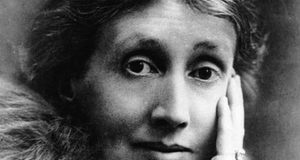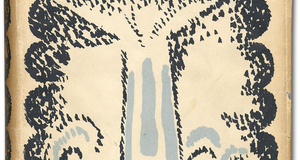The Process of Unity in Virginia Woolf's Between the Acts
By
2015, Vol. 7 No. 07 | pg. 1/2 | » AbstractIn Virginia Woolf’s Between the Acts, Woolf raises the theme of a progression toward social unification. Through her analysis of repetition, milieu, and the audience’s shared state of distractedness, Woolf enriches her text by emphasizing process rather over outcome. Woolf’s text aligns with Kant’s notion of universal communicability and implies that the process transcends the effect of unity itself. By highlighting the potential for unity, rather than the actual achievement of unity itself, Woolf intimates that this unfixed process allows for the possibility of a stable social and national identity. In so doing, Woolf elucidates that unity, as a loose, unpotentiated flux, may ultimately preclude the emergence of the Nazi tyrannical regime that threatened both Woolf’s world and world view. In Virginia Woolf’s Between the Acts, Woolf writes from a position “between the acts,” a phrase that contains a multiplicity of meanings. Quite literally, this novel takes place between the acts of a theatrical play staged by director Mrs. La Trobe. However, historically speaking, this moratorium “between the acts” may also signify the interregnum between World War I and World War II, specifically between the fall of Germany’s Weimar Republic with the subsequent end of democratic government and the rise of the Third Reich. Through Woolf’s novel, this state of being “in between” is metaphorized as the time in between the acts of a play. Within the novel, Woolf shifts the emphasis away from the theatrical act and towards the spectators’ relationship to the act. In particular, Woolf focuses on the audience’s proclivity for distraction and dispersion, highlighting these tendencies to orient oneself away from the action of the play and towards something else, namely towards interaction among people. In so doing, Woolf raises the notion of unification, intimating that shifting one’s focus away from the theatrical act towards spectatorial determination, in essence, looking towards the process rather than the effect, enables the reader to understand politics and history in a different way.Woolf essentially looks towards the interval “in between” the great wars, raising the theme of a process towards unification. Woolf believes that through an “empty stage,” with less attention paid to the act itself, there are just as many gaps and forms of distraction among spectators. This shows that they are all united in the sense that they are in the same condition – the state of being distracted or dispersed. Shared states of being and togetherness in the form of distractedness allows for a condition of possibility for unity. Focusing on the audience and its state of unpotentiated flux throughout the play allows Woolf to emphasize the process rather than the outcome. Woolf’s text seems to align with Kant’s notion of universal communicability, as her focus on the conditions of possibility for unity enables the process to transcend the effect of unity itself. Woolf’s ideas in this novel reflect, with precision, certain ideas from Kant about the spectatorial determination of history, devaluing the arrival at a stable understanding of the world and emphasizing the importance of a prehistoric potentiality. Throughout the play, Woolf uses repetition to emphasize the mutability of meaning. For instance, the cows’ bellowing also illustrates the process of aspiring towards unity, specifically, vocal unity: “All the great moon-eyed heads laid themselves back. From cow after cow came the same yearning bellow. The whole world was filled with dumb yearning…The cows annihilated the gap; bridged the distance; filled the emptiness and continued the emotion…Suddenly the cows stopped; lowered their heads, and began browsing. Simultaneously the audience lowered their heads and read their programmes” (Woolf, 96). Woolf continually alludes to a pervading rhythmic and repetitious flow of activity amid the surroundings, made abundantly clear by her diction. For example, Woolf describes the bellows echoing from “cow after cow,” hinting at a cyclical rhythm engendered by repetition of the word “cow.” The cows seem to be performing the same action, indicated by the word “all.” This sameness, deriving from repetition, implies a state of stasis or a lack of difference. However, whereas repetition, conceptually, is oriented against change, Woolf’s repetition is actually imbued with a sense of change and possibility for the future. Repetition does not engender static implications. Rather, the cows’ monotony suggests a dynamic process of unification by virtue of the fact that they all repeatedly “bellow” and “yearn.” Therefore, this sequence of recurring, reverberating gestures aptly engenders a scenario fostering unity. The cows’ movements seem to echo the gestures of the spectators, thus further evoking the idea of monotony. Ultimately, repetition serves as a way of achieving unity and leaves things in flux, thereby opening up to the possibility of change and the future. As evidenced in the passage, there exists a sense of progression towards unity stemming from a way of being, to wit a state of monotony experienced by all the cows. Accordingly, repetitive gestures and vocalization allow for change and possibility. The “yearning” described by Woolf connotes a longing for something that has yet to be attained. This word implies a sense of striving towards fixed unity and, consequently, aptly elucidates a state of flux defined by a condition of possibility for change and many forms of unity. There exists this potential and kind of flexibility associated with this striving because a final, rigid unity has not materialized. Ultimately, the cows seem to metaphorize the becoming of a unified social body: though they have not yet come into “being” unified, they are currently entrenched in the process of “becoming” unified through the unraveling of voice and gesture. A state of existing “in between” abounds in this passage, as Woolf repeatedly mentions a “distance,” a “gap,” and “emptiness” to evoke a state of precarious situation in limbo or flux without stability. However, Woolf describes these holes as being “bridged” or “annihilated” in order to underscore the process of aspiring towards unity. Thus, through her phraseology, Woolf appeals to a sense of progressing from a locus to an end goal, namely, unity. The act of the cows stopping, lowering their heads, and browsing also lends a degree of weight to this unifying process. In a sense, this process of repetition creates a sense of movement and change. Similarly, just as this process of repetition yields difference, the process of reconstructing history and social organizations can engender change, namely a sense of stable national identity designed to avert contemporary rising fascist tendencies. Another element of the surroundings, namely, the wind, serves as a vehicle for unification. Woolf notes, using parentheticals, that “The breeze blew gaps between their words” (Woolf, 95). The breeze disrupts the continuous flow of words by creating “gaps.” She integrates the idea of an empty, “in-between” condition through this notion of a gap to highlight the process wherein words are strung together in an attempt to foster unified speech. She uses wind’s disruptive capability to draw attention to this unfixed process of creating fluid, uninterrupted speech by fusing words into language. This breeze, or gust of air, can be construed as something universally relatable and loose in terms of its potentiality. Given that everyone shares the same air, this breeze seems to metaphorize a shared opportunity for speech. Owing to this shared condition, everyone is, in a sense, on the way to saying something particular and, accordingly, in the process of coming into “being.” In addition, Woolf endows this “breeze” with a sense of agency through personification. Thus, the breeze seems to actively break apart sentences in order to engender a primordial soup of floating words that can be fashioned into a number of different meanings. In this condition of primordial flux wherein everyone breathes the same air, there transpires a process of break to a state of prehistoric potentiality wherein the only glue that words possess is the air – an amorphous, unbinding substance that wields enormous possibility for changing meaning. Essentially, Woolf advocates a a return to a state of merely “becoming,” rather than “being,” which carries with it a weighted sense of finality. This state of becoming can allow for all social forms to be constructed upon it, thereby allowing for a multivalence of meaning and incalculable possibility for unified forms of social organization and stable national identity. Ultimately, Woolf, who lived during both world wars, invokes this idea of developing towards a social unity that can obviate the rise of the Third Reich and thereby preclude the horrors of war. Furthermore, the aforementioned atmospheric effects, elicited by the cows and the breeze, serve to impact the representation at the level of mood. They function as presemantic forms of orientation, tending towards unity but not having arrived there yet. This immersion in the process produces a feeling much like that associated with existing “between the acts.” These external elements are capable of potentiating a variety of possibilities for unity through progress. This degree of potentiality for many meanings implies that external conditions are inherently tied to the progression and unfolding of social and political history. In particular, Mrs. La Trobe sets up a mirror in front of the audience to shift the focus towards the spectators as they disperse at the end of the play: “…the looking glasses flashed, darted, exposed…all evaded or shaded themselves” (Woolf, 125-6). Here, the mirror literally reflects the process of spectatorial activity. The word “flashed” connotes a sudden illuminating action, potentially one that elucidates the spectators’ shared state, namely their togetherness. Shocked by what they see, the audience members respond uniformly. This uniform reaction enables a process of gelling together to transpire; therefore, the nature of their reactions intimates a progression towards the outcome of a stable sense of unity. The mirror, or the external condition, has no guaranteed meaning and remains only to testify, to demand, to induce a condition for the possibility of unity, akin to the possibilities for achieving a stable sense of national identity in society. By the same token, Woolf conveys gesture as a means for achieving unity, particularly when the audience looks in the direction of an actor arriving on stage: “They all looked where she came…All arms were raised; all faces stared” (Woolf, 63). Their gesture in the same direction imbues them with a sense of togetherness, thereby revealing gesture to be a unifying process. Woolf carefully chooses her diction so as to subtly articulate the importance of this act of unification, specifically using the word “all.” This word, directly preceding the verbs “looking,” “raising,” and “staring,” implies that these spectatorial actions are amalgamating processes. Therefore, through meticulously crafted rhetoric, Woolf educes the concept of spectatorial gesture as a process for arriving at a stable sense of unity. She shifts the reader’s attention away from the outcome of gesture and merely towards the act of gesturing itself. Here gesture can be viewed as an embodiment of openness, essentially a process that physically draws the reader into the space and action. Accordingly, with gesture, there is no fixed meaning but, rather, manifold possibilities.Continued on Next Page » Suggested Reading from Inquiries Journal
Inquiries Journal provides undergraduate and graduate students around the world a platform for the wide dissemination of academic work over a range of core disciplines. Representing the work of students from hundreds of institutions around the globe, Inquiries Journal's large database of academic articles is completely free. Learn more | Blog | Submit Latest in Literature |
















